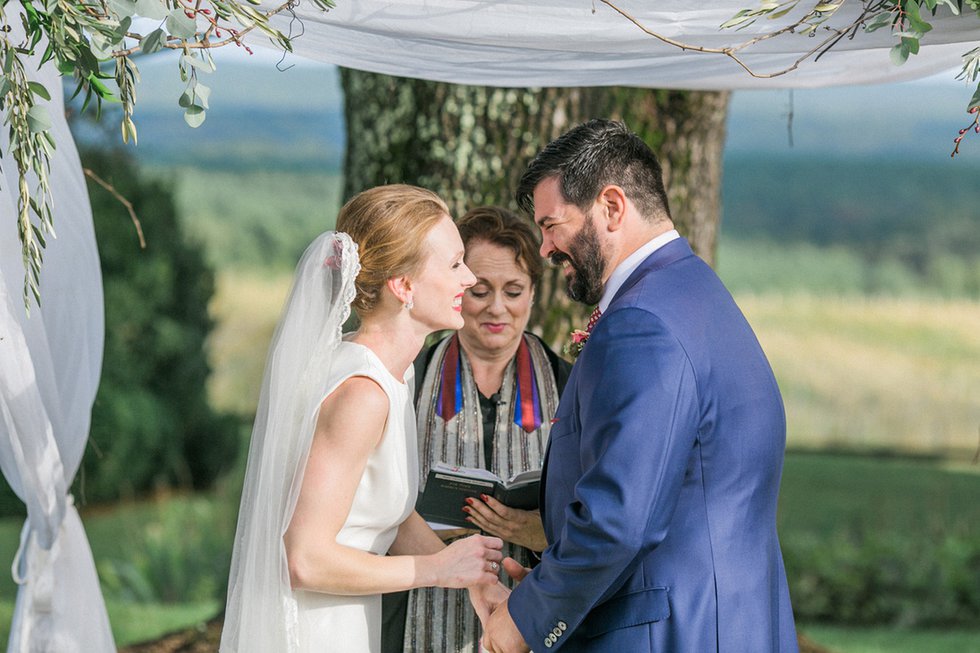Mount Vernon humanizes the father of our country.

Washington in the Young Virginian gallery.

Melody Sawyer Richardson Theater.

Bronze statues of the Washington family.
George Washington’s home was a tourist destination long before the Mount Vernon Ladies’ Association worked its restoration magic and reopened it in 1858. General Washington may have intended to retire to the peace and quiet of rural Virginia after eight rough years of army life, but his tranquility was continually disrupted by admirers making the pilgrimage to meet their hero, and even more came during and after his two-term presidency. They were called guests in those days, not tourists, and they were welcomed with an invitation to dinner and the offer of a guest bedchamber.
Their number must have overwhelmed the Washingtons. In fact, Washington wrote to a friend, “Unless some one pops in, unexpectedly, Mrs. Washington and myself will do what I believe has not been [done] within the last twenty years by us, that is to set down to dinner by ourselves.”
Yet George and Martha Washington took it all in stride. “I have no objection,” he wrote in 1794, during his presidency, “to any sober or orderly person’s gratifying their curiosity in viewing the buildings, gardens etc. about Mount Vernon.” His words still serve as a personal invitation to visit the home of the man known—even during his lifetime—as father of his country.
And we have. We traveled there by school bus or by station wagon. We were herded through the mansion by teachers or parents or grandparents or Scout leaders. We strolled through the gardens, rested on the Windsor chairs that line the piazza, and soaked up that incredible view of the Potomac River. We’ve all “been there, done that”—many of us more than once. Why do it again?
Because Mount Vernon today is not the Mount Vernon of your childhood.
About 15 years ago, Mount Vernon administrators set out to make the estate more of a reflection of Washington, his family and his personality, “rather than a checklist of 18th-century artifacts,” explained Jim Rees, Mount Vernon’s former Executive Director (Rees passed away in 2014). “We started showing how the Washingtons really lived rather than pointing out their furniture.” To illustrate Washington the farmer, they re-created the “George Washington: Pioneer Farmer” site, a four-acre plot by the Potomac River where costumed interpreters grow period crops in the 18th-century manner. They reconstructed the unique 16-sided treading barn that Washington invented to facilitate indoor threshing, as well as the stables and slave quarters that once stood on the grounds. They talked more about the slaves who did most of the work and how Washington freed them in his will. They acquired more animals and brought them in closer to the visitors. Rare breeds such as Hogg Island sheep and Ossabaw Island hogs (descendants of those that survived shipwrecks in the Colonial period) brought life to the plantation, and mules reminded visitors that it was the innovative Washington who first introduced this hardworking beast to America by importing male jackasses from Spain and breeding them with mares.
“People loved it,” said Rees. “But exit polls still said visitors felt they hadn’t learned enough about the real George Washington.”
Part of the problem is that today’s visitors come knowing less about Washington than past generations. “It’s interesting to compare the history book used today in the fourth grade to the one I used 40-odd years ago. Today’s book devotes very little text to Washington, while the older one contains pages and pages,” he said. “Teachers aren’t teaching as much about Washington as they once did, so we can no longer assume that visitors arrive at our gates with a basic knowledge of Washington’s life and accomplishments.”
After much research, the staff at Mount Vernon decided the solution lay in a comprehensive presentation of the man—not just Washington the plantation owner, who had always been the focus of their story, but Washington the teenage surveyor, Washington the young soldier during the French and Indian War, Washington the general, Washington the president and Washington the father of his country. To portray this multifaceted man solely in the context of a Virginia plantation was not possible. A change in tactics—not to mention an ambitious new visitors’ complex—was needed.
That new complex opened in 2007. Ironically, the Ford Orientation Center and the Donald W. Reynolds Museum and Education Center contain little about Mount Vernon itself. The mansion still lies atop the hill, furnished with Washington antiques and newly rendered in the brighter paint and fabric colors so popular during the early Federal period. But now—tucked mostly underground, down the hill below the mansion so as not to disturb the view—there is an orientation center, museum and education center with 23 galleries that stress the importance of Washington’s military and presidential careers. With 65,000 square feet of new space, Mount Vernon can tackle topics that couldn’t be covered during the normal mansion-and-grounds tour.
The museum is filled with books, commemorative items, manuscripts, antiques and archaeological artifacts, as well as prints, maps and paintings, including several important paintings on long-term loan from museums such as New York’s Metropolitan.
One gallery even displays Washington’s famous false teeth, mechanically hinged dentures made of cow teeth, human teeth and elephant ivory that dispel once and for all the myth of the wooden teeth. Poor Washington suffered from dental problems throughout most of his adult life, retaining only one of his original teeth by the time he became president.
Five theaters show films and multi-media presentations that introduce visitors to the Washington his friends and contemporaries knew. In the Revolutionary War Theater, a lively film shows the critical difference Washington made in three major battles while it entertains the audience with snow, fog and rumbling seats. Nine videos focus on Washington’s accomplishments as a farmer, inventor and entrepreneur. Interactive exhibits lure visitors into the education center where LED map displays, touch-screen computer monitors, surround-sound audio and illusionist lighting effects grab their attention and hang on tight.
Your horizons will expand further when you see what forensic science has wrought. Working from Washington’s portraits (the earliest at age 40), his dentures (which tell about changes in facial bone structure), his clothing and his life mask and statue by French sculptor Jean-Antoine Houdon, forensic anthropologist Dr. Jeffrey H. Schwartz, a professor at the University of Pittsburgh, has helped re-create three actual-size versions of Washington during different phases of his life.
Most unexpected is the 19-year-old surveyor: Tall, handsome, with auburn hair, grey-blue eyes and large hands, this is a John Wayne type, a muscular hunk who was widely acknowledged as an excellent dancer and the best horseback rider anyone had ever known. “He was adventurous, athletic, a real ladies’ man,” said Rees. “Abigail Adams goes on and on about the ‘presence of Washington,’ about what it was like to be around him, which I’m sure drove her husband crazy.” Beyond his physical charms, he had a personality any young lady would swoon over—modest, caring, hard-working and thoroughly decent. No wonder Martha said yes when George came courting!
A significant portion of the building is devoted to what has become, in effect, Washington’s presidential library. Mount Vernon owns dozens of books from his original library, not to mention the vast number of his papers—personal, military and governmental. Since 1969, Mount Vernon has been supporting the work of professors at the University of Virginia who have been collecting and publishing the entire body of Washington’s papers—resulting so far in 53 volumes, with at least 40 more to come. Mount Vernon is funding the digitization of all 90-odd volumes so that every document relating to Washington will eventually be available online to the whole world. The library welcomes all levels of interest: scholars, high school students and genealogy buffs. Genealogies of several of Washington’s slaves will also be added.
In the old days, two hours at Mount Vernon was sufficient to tour the mansion, walk through the gardens and peek at Washington’s tomb. With the new facilities up and running, a family could easily spend a full day. Lunch and dinner are available at the elegant tavern or at an informal food court with kid-friendly fare. Special tours and activities for children are plentiful, including seasonal activities at the Pioneer Farmer site. And the 30-minute Potomac River boat ride provides time to reflect and relax.
Three miles down the road there is one more must-see, the Washington gristmill, restored and opened for visitors just a couple years ago. At this giant water-powered mill, the farming process comes full cycle as costumed millers grind into flour the wheat that was harvested at Mount Vernon and threshed in the 16-sided barn. The distillery that once stood beside the mill is also undergoing restoration. Upon completion next year, the distillery will take the process one step further, turning corn into liquor. George Washington worked hard at making his plantation profitable, and he did not die in debt as Jefferson and many of the founding fathers did.
Mount Vernon gives us the human Washington, with his flaws and greatness, the man of principle who overcame unimaginable odds to create a revolutionary army, defeat the most powerful military on earth and guide a new country through its formative years, only to relinquish power when he was through. No one had ever led a revolution and stepped aside, not Julius Caesar, not Oliver Cromwell. Nor, as Ellis points out, would future revolutionaries Napoleon, Lenin, Mao, or Castro.
As the Revolutionary War ended, painter Benjamin West conversed with his patron, King George III. The king asked the American-born artist what Washington would do now—form a military dictatorship with his army or become king of America? West replied that he would probably retire to his farm at Mount Vernon, as he always said he would. King George scoffed in disbelief. If he did that, the king replied, “he will be the greatest man in the world.”
Insiders say November and December are the best times to visit—quiet, not too cold—and only in December can you see the third floor, with Martha Washington’s room for her last two years, as well as bedchambers for grandchildren. No lines at all in January – March. MountVernon.org









